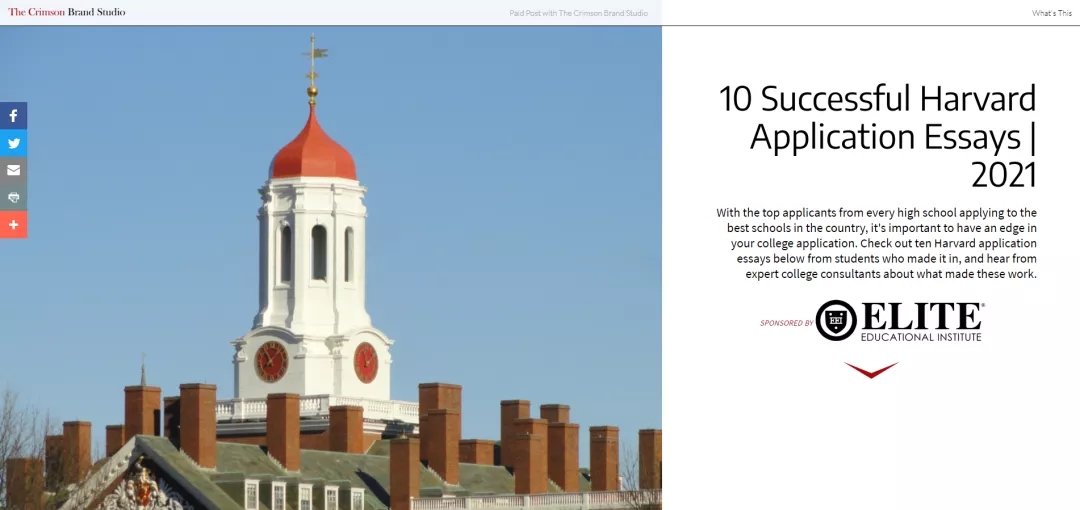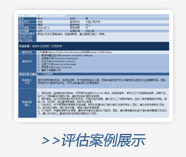美国本科申请Essay写作需要独特的灵感和思路,因此学生除了要善于观察生活、勤于思考,学习优秀的范文也会有一定的帮助。
哈佛校报最近公布了2021年度10篇成功申请到哈佛大学的优秀范文,其中不乏中国学生的范文。同时校报对每篇范文都给出了点评,对于这些文书之所以成为优秀范文指出了其中要害,值得我们学习。

01
Jiafeng:中国的毛笔字
从拼音名字和文书内容上,可以判断这位学生来自中国。因此这篇文书也是本文的重点,建议大家仔细阅读参考。
这篇文书内容主题是书法,通过描写自己对书法的偏爱,侧面展现了他在追求知识的无限乐趣。
完整文书展示:

I have a fetish for writing.
I’m not talking about crafting prose or verses, or even sentences out of words. But simply constructing letters and characters from strokes of ink gives me immense satisfaction. It’s not quite calligraphy, as I don’t use calligraphic pens or Chinese writing brushes; I prefer it simple, spontaneous, and subconscious. I often find myself crafting characters in the margins of notebooks with a fifty-cent pencil, or tracing letters out of thin air with anything from chopsticks to fingertips.
The art of handwriting is a relic in the information era. Why write when one can type? Perhaps the Chinese had an answer before the advent of keyboards. “One’s handwriting,” said the ancient Chinese, “is a painting of one’s mind.” After all, when I practice my handwriting, I am crafting characters.
My character.
I particularly enjoy meticulously designing a character, stroke by stroke, and eventually building up, letter by letter, to a quote personalized in my own voice. Every movement of the pen and every droplet of ink all lead to something profound, as if the arches of every "m" are doorways to revelations. After all, characters are the building blocks of language, and language is the only vehicle through which knowledge unfolds. Thus, in a way, these letters under my pen are themselves representations of knowledge, and the delicate beauty of every letter proves, visually, the intrinsic beauty of knowing. I suppose handwriting reminds me of my conviction in this visual manner: through learning answers are found, lives enriched, and societies bettered.
Moreover, perhaps this strange passion in polishing every single character of a word delineates my dedication to learning, testifies my zeal for my conviction, and sketches a crucial stroke of my character.
"We--must--know ... " the mathematician David Hilbert's voice echoes in resolute cursive at the tip of my pen, as he, addressing German scientists in 1930, propounds the goal of modern intellectuals. My pen firmly nods in agreement with Hilbert, while my mind again fumbles for the path to knowledge.
The versatility of handwriting enthralls me. The Chinese developed many styles -- called hands -- of writing. Fittingly, each hand seems to parallel one of my many academic interests. Characters of the Regular Hand (kai shu), a legible script, serve me well during many long hours when I scratch my head and try to prove a mathematical statement rigorously, as the legibility illuminates my logic on paper. Words of the Running Hand (xing shu), a semi-cursive script, are like the passionate words that I speak before a committee of Model United Nations delegates, propounding a decisive course of action: the words, both spoken and written, are swift and coherent but resolute and emphatic. And strokes of the Cursive Hand (cao shu) resemble those sudden artistic sparks when I deliver a line on stage: free spontaneous, but emphatic syllables travel through the lights like rivers of ink flowing on the page.
Yet the fact that the three distinctive hands cooperate so seamlessly, fusing together the glorious culture of writing, is perhaps a fable of learning, a testament that the many talents of the Renaissance Man could all be worthwhile for enriching human society. Such is my methodology: just like I organize my different hands into a neat personal style with my fetish for writing, I can unify my broad interests with my passion for learning.
“...We -- will -- know!” Hilbert finishes his adage, as I frantically slice an exclamation mark as the final stroke of this painting of my mind.
I must know: for knowing, like well-crafted letters, has an inherent beauty and an intrinsic value. I will know: for my versatile interests in academics will flow like my versatile styles of writing.
I must know and I will know: for my fetish for writing is a fetish for learning.
招生官点评:
Jiafeng’s essay succeeds by using the metaphor of handwriting, and it’s immense physical satisfaction, to showcase the unbounded pleasure of pursuing knowledge. We can visualize spontaneously crafted letters filling his notebooks. We see him trace Chinese characters into air by chopstick and fingertip. We learn that he expresses his innermost self through an art that has become a relic within the information age. As we peer into his mind, we learn something essential about Jiafeng’s character–that he is irrepressibly drawn to the intricate beauty of pure learning.
Jiafeng的文章成功地运用了笔迹的隐喻,以及巨大的满足感,展示了追求知识的无限乐趣。我们可以想象他在笔记本上写满了字,我们看到他用筷子和指尖在空中画汉字。虽然书法已经成为信息时代的遗物,但他通过这种艺术表达了他内心深处的自我。我们了解到了Jiafeng性格的一些基本特征——他无法抑制地在纯粹的学习中被错综复杂的美所吸引。




